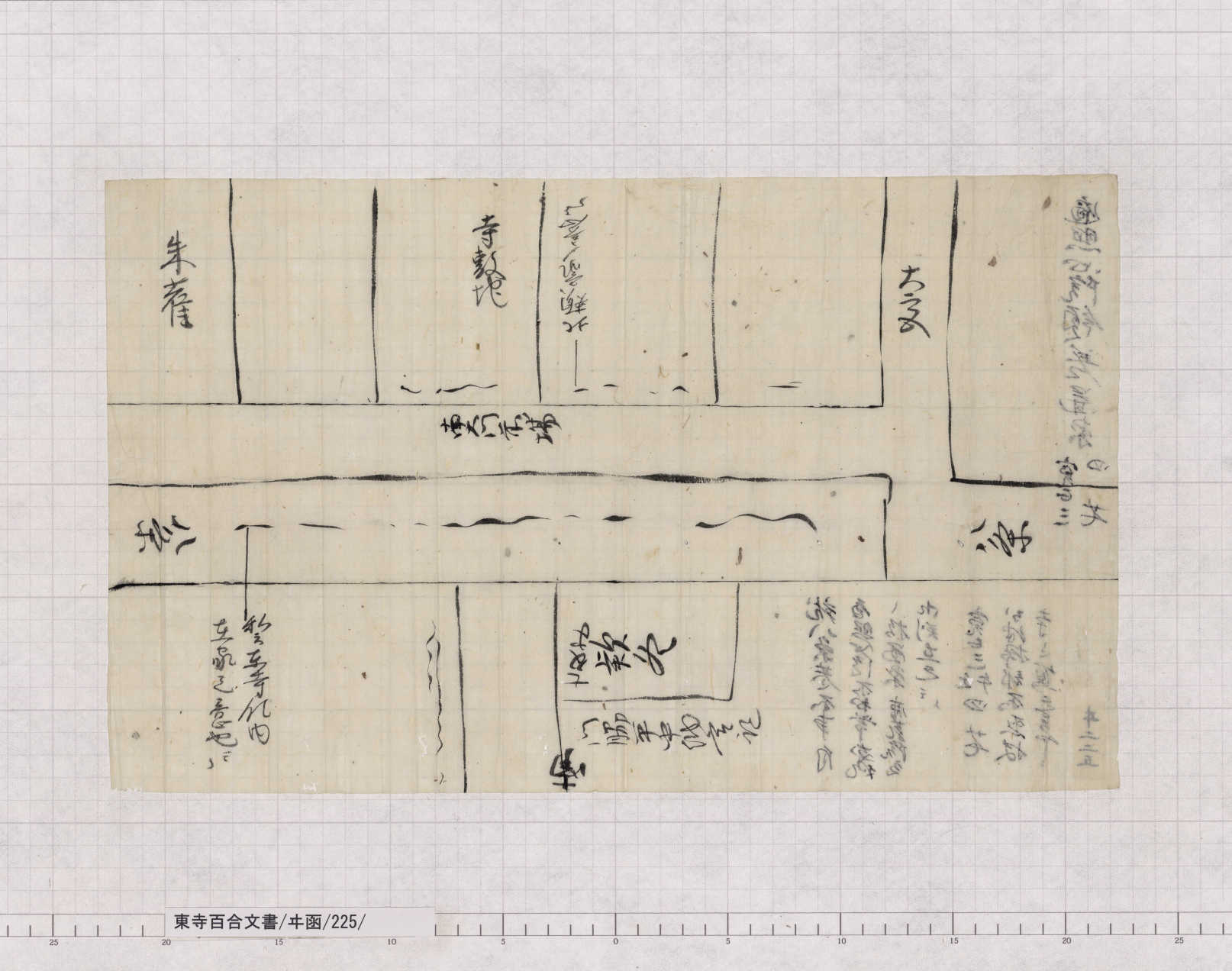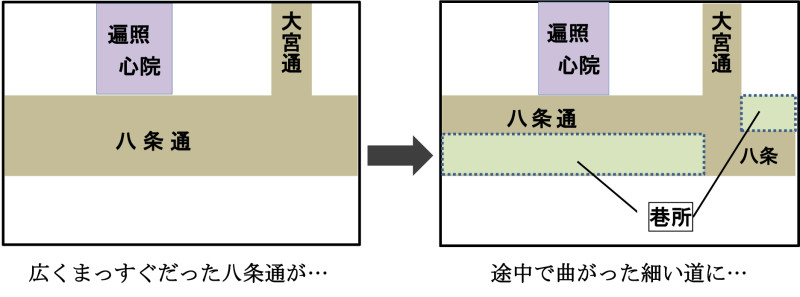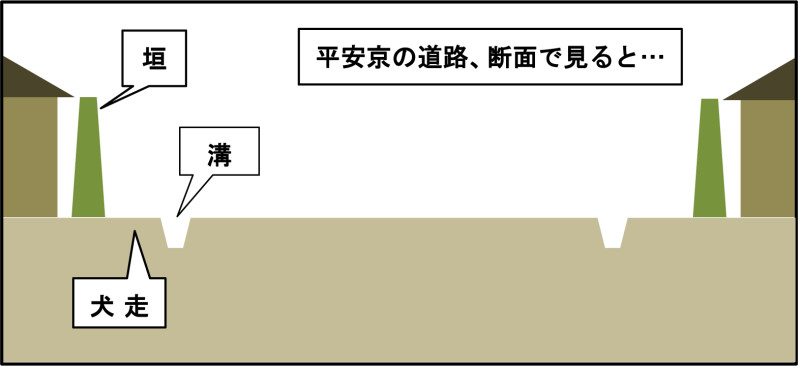Roads turned into farm fields, inch by inch, in the central metropolitan area!?
That would not occur in today’s Japan, but surprisingly happened often in the metropolitan area of medieval Kyoto (“Heiankyo”(平安京)). Was it something like rooftop greening in the present day, where people make garden park and vegetable gardens on the rooftop of buildings?
No, it was not something like that. Roads in Heiankyo were laid out in a grid pattern. They were marked into blocks and developed in regular straight lines. What happened to them?
The document below indicates how the roads were transformed:

This diagram shows “Kosho”(巷所) near a temple called “Hensho Shin’in”(遍照心院). “Kosho” is the very term that refers to the parts of roads in Heiankyo that were tilled and turned into farm fields and housing land.
The mapped area is a little to the north of the Toji temple, at the south of the present Kyoto Aquarium. The Hachijo-dori street runs from east to west, and crosses with the Omiya-dori street. Around this intersection, Kosho spread both from the northeast and from the southwest, transforming Hachijo-dori from a broad, straight road into a narrow street that was curved in the middle. Why did this happen?

First, let’s review what roads in Heiankyo were like.
It is well known that roads in Heiankyo were laid out in a grid pattern. Developed roads were called “Oji (lit. broader roads)” and “Shoji (lit. narrower streets)”, and had the respectively specified widths. There were also other precise requirements concerning fences for separating roads from housing land, and concerning aisles called “Inubashiri (berms)”(犬走) or “Inuyuki”(犬行) and gutters on both sides of roads. The specified width for Oji was 8 jo (24 meters) and that for Shoji was 4 jo (12 meters). Suzaku Oji had the largest width that reached as much as 28 jo (nearly 85 meters)!

In today’s Japan, general national roads have the width of about three meters per lane. A road with four lanes is approximately 20 meters wide, including sidewalks. This means that ancient Ojis had the breadth equivalent to that of the present national roads. Unlike today, cars were not driving on the roads at a high speed. The roads were not paved with concrete. It may not have caused such a big trouble even if people used the rim of wide roads for some personal reasons.
However, as Kosho spread from the rim to a wider area of the road, it gradually became a problem. Of course the Imperial Court prohibited Kosho, but people would not listen to it. Gradually, Kosho was made in many parts of Heiankyo.
People made rice and barley. Rush grass was often grown near the gutters beside the road, because the soil was wet.
The neighborhood of Toji was much crowded with passers-by and visitors to Toji, as an entrance to the central Heiankyo (“Rakuchu”(洛中)). In such a place, it should have been obstructive that more than half of the road was tilled and used for farming. The document above was also made at a petition from a temple nearby, Hensho Shin’in.
This was a complicated story about roads in the ancient metropolitan Kyoto. Look forward to the sequel.